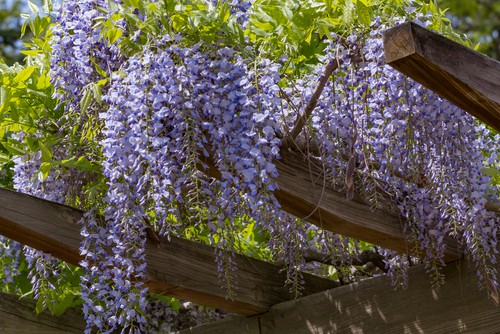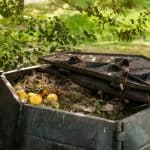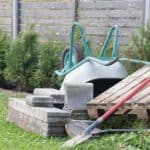Last updated on March 4th, 2022
Our site is reader supported, this means we may earn a small commission from Amazon and other affiliates when you buy through links on our site.
Many gardens are designed to provide a unique accent and with some careful planning, you can specifically choose tall purple flowers to fill your garden so that you can enjoy several shades of purple complimented by vibrant green foliage. Below you will find our favourite plants with purple flowers.
1. Verbena bonariensis
This perennial offers rose violet and lavender blooms between June and the first frosts. It will thrive in full sun or partial shade and is very low maintenance with just the occasional deading heading needed.
Once it reaches maturity it will spread up to 1 metre and reach up to 1.25 metres tall, which means it makes the perfect plant for the back of borders too. It is tolerant of poor soil as long as you have good drainage. It is a very fast grower and will form clumps if left to its own devices. It is perfect for mixed borders and cottage gardens, especially if you love tall clumps of dark green leaves out of which rise tiny purple flowers. It really is a stunning plant.
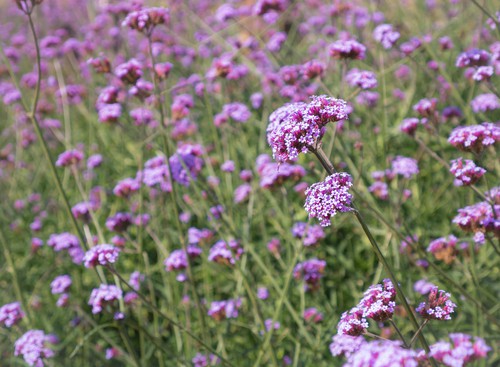
2. Allium ‘Globemaster’ – Ornamental Onion
The Ornamental Onion is a bulb-type plant that offers deep lavender blooms in the month of May that can be as large as a small child’s head, so they really are something spectacular to look at. They are very easily grown as long as they get access to full sun or partial shade and well-drained soil. It will perform well even in sandy soil and is actually quite tolerant of a wide range of different soils, making it well-suited to gardens that don’t have a perfect soil balance.
The flowers are very showy and the leaves are fragrant, bringing to your garden butterflies and bees alike. It actually gets its colloquial name from the strong onion scent produced by the foliage. If you plant this in your garden rest assured it will work very well as a striking accent piece.
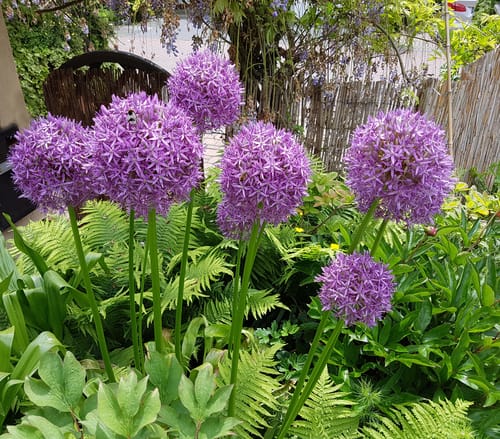
3. Salvia caradonna – Bolkan Clary
Bolkan Clary is a herbaceous perennial that will span between 30-60cm in spread and height. It produces blue-violet flowers between June and September.
Maintenance is quite simple, requiring full sun and dry to medium watering requirements. Beyond that, the fragrant leaves and showy flowers will attract butterflies and guests alike to your home. It actually grows well in moist, sandy soil that has good drainage and can also tolerate some drought.
The Salvia plants can offer repeat flowering throughout the summer, but in order to achieve this, you will need water regularly to keep the soil moist. If you want to extend the length of the blooming time you enjoy you can remove spent flowers spikes immediately. As summer progresses the plants tend to open up and flop and you have the option of cutting it back to the basal foliage (if you so choose) in order to combat the flop but it won’t actually harm the plant to leave it be.
It forms clumps with large lavender and violet flowers that are quite noteworthy, not just because of the shades the flowers take on, but because of the dark purple stems that you can enjoy as well. This perennial plant is perfect for cottage gardens, wildflower gardens or using in a perennial border.
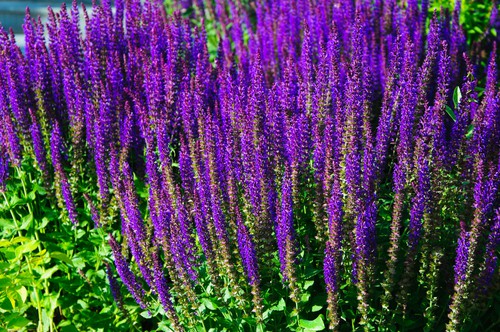
4. Clematis florida ‘Sieboldiana’
While this clematis is regarded as a deciduous vine, it also offers uniquely beautiful flowers that can get up to 10cm across and is great for those looking for a climber to cover a fence, grow over a pergola or just to grow up some trellis work.
With this variety, you can achieve multiple blooms throughout the season, each flower produces six petals, inside of which has a rich purple stamen. This clematis thrives in full sun so if you want to enjoy reblooming sporadically throughout the summer and autumn make sure it receives adequate sunlight. A truly stunning clematis that also grows well in pots.
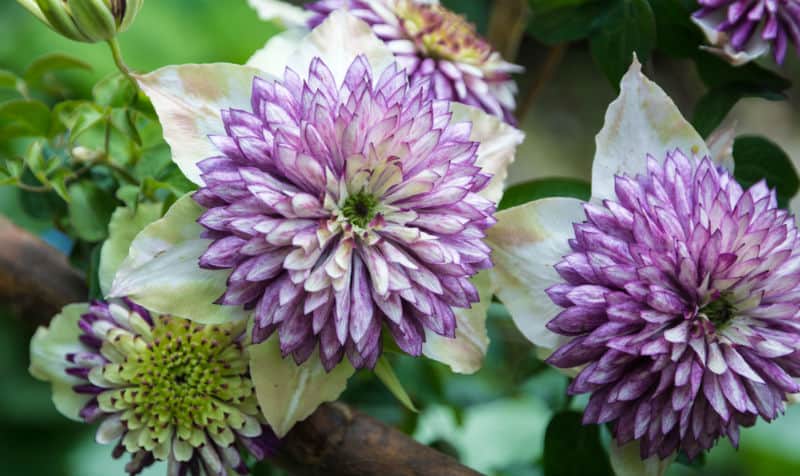
5. Lavender ‘Munstead’
This is a compact evergreen herb that produces grey foliage and lavender coloured flower spikes. In its dried form, it is commonly used for all manner of toiletries, perfumes and oils. You can even add dried sprigs to your home in order to deter pests and it’s great for cooking with too.
This plant is well-regarded for its aromatic foliage and of course for the collection of stunning purple flowers it produces. Planting Lavender is a wonderful addition to rock gardens, herb gardens and perennial borders alike. It is strong enough to thrive in rocky outcroppings and is typically found in Mediterranean style gardens. It will perform equally well in large pots so you can grow it on a balcony or place it around your patio to enjoy the fragrance while you sit outside.
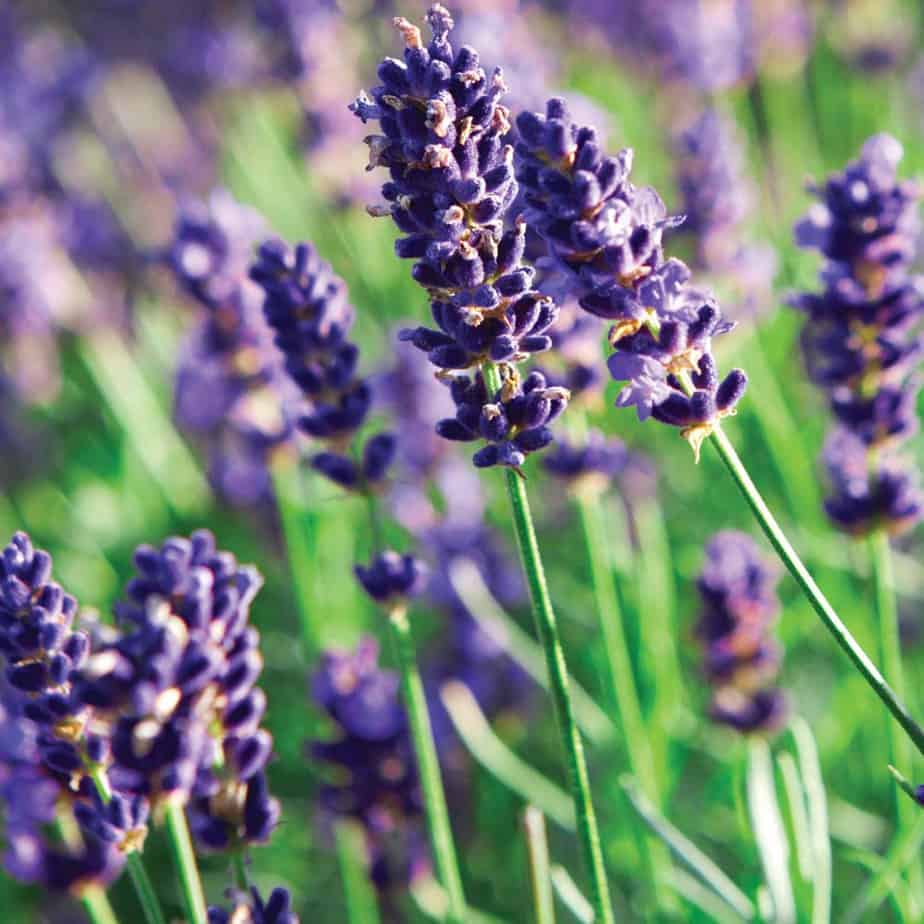
6. Buddleia ‘Black Knight’ – Butterfly Bush
This beauty is referred to as the Butterfly Bush, quite simply because it will attract butterflies all summer long. It is a deciduous shrub that not only produces deep purple flowers in clusters but it is heavily fragrant too. The foliage takes on a willow-like appearance and this is offset by the flowers so deeply purple they almost look black. It is very easy to grow and will grow quite quickly in fact. You can plant it in well-drained soil giving it full sunlight and encourage additional flowers by deadheading regularly. Although they can grow quite large, they can be pruned back hard to become even better plants.
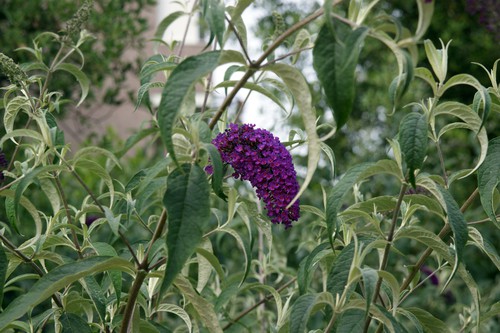
7. Erysimum ‘Bowles Mauve’
This plant produces dense racemes of large flowers that are not only a stunning purple shade but have a rich fragrance too. It can reach up to 75cm in size and produces narrow, dark green leaves that offset the rich purple flowers that often stay well into the winter.
You can enjoy silver-green foliage all year round with beautiful flowers in the spring, summer, and unlike most other plants, in winter. Very little maintenance is required and pruning only needs to be done after flowering in order to prevent your plant from getting too leggy. A stunning evergreen perennial that is more like a shrub.
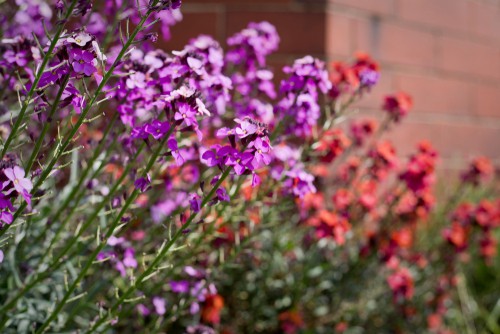
8. Syringa vularis ‘Charles Joly’ – California Lilac
This is a medium-sized shrub (commonly known as a California Lilac) that has fragrant double flowers and can be used to create a border, hedging, privacy screen or even a windbreak. It is well-known for the open-branched, green foliage it produces with the deep purple double flower clusters. You will enjoy blooms in the middle of May all the way through summer and it can even be grown as a small tree. Moreover, this plant thrives in cooler climates which means it can be grown in all parts of the UK.
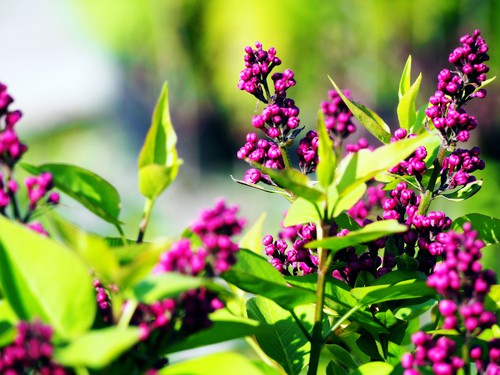
9. Campanula portenschlagiana
This is one of the best bell flowers you can choose, especially if you need to fill in space between your stepping stones, add some accent to a rock garden or give your garden a beautiful purple flower to trail over your walls.
It produces bell-shaped flowers in such large quantities that it actually hides the green foliage below. The purple flowers will appear in spring and stay present throughout the summer. If you are lucky enough, you even get a second round of flowers in the autumn. If you’re looking to purchase this plant it’s often located amongst the rockery plants in garden centres and nurseries.
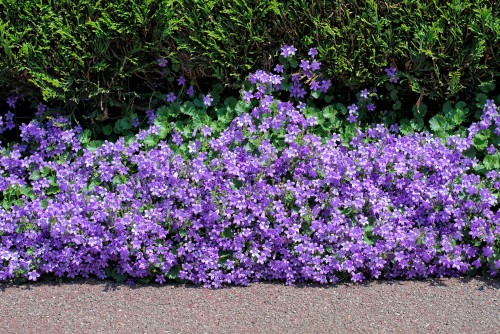
10. Wisteria sinensis – Chinese Wisteria
This Wisteria often referred to as Chinese Wisteria, is a climber that produces lilac purple coloured blooms between May and June. It is best grown in well-drained soil that is slightly acidic.
In order to enjoy the flowering, you will need to give it full sunlight. Given that it is a vine you need to make sure it has enough space to grow outwards and upwards and that it has a support structure on which to grow. Rest assured that while you will enjoy beautiful blooms for a long time after the plant establishes itself, it can take two or three years after planting before it starts to produce flowers.
During those initial few years, you will need to properly train the vines up whatever structure you have, such as a pergola, trellis, or terrace wall. Once that is done you can sit underneath your pergola and watch the prolific blooms of lilac flowers come spring.
